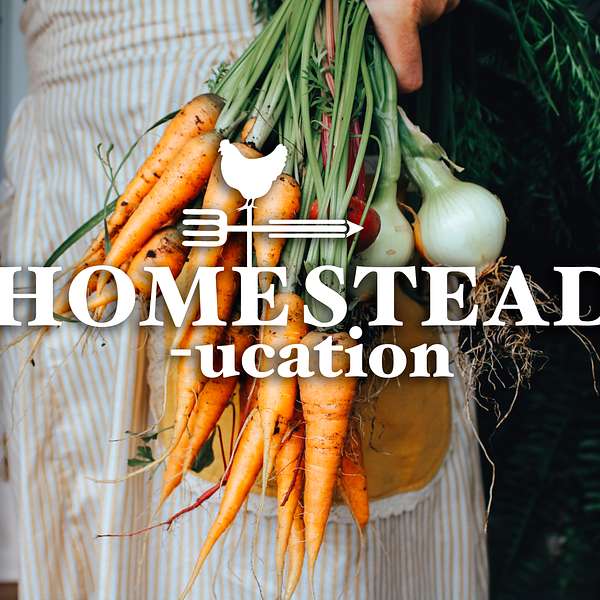
HOMESTEADucation
A podcast for those who are looking to slow down, return to their roots and feel more self-sufficient. Join Mandi Pickering of Wild Oak Farms, and Angela Ferraro-Fanning of Axe & Root Homestead in their new podcast HOMESTEADucation, created by homesteaders for homesteaders. This podcast will explore different facets of homesteading in detail including vegetable gardening, fruit orchard care, animal husbandry, and more. Follow us on Instagram: Angela @axeandroothomestead and Mandi @wildoakfarms
HOMESTEADucation
Natives, Growing Zones, Microclimates
Season 5: Episode 3 / Natives, Growing Zones, Microclimates
What is a native species?
According to US Forest Service:
“Native plants are the indigenous terrestrial and aquatic species that have evolved and occur naturally in a particular region, ecosystem, and habitat. Species native to North America are generally recognized as those occurring on the continent prior to European settlement.”
What is an invasive species?
From US Forest Service:
“An "invasive species" is defined as a species that is
- Non-native (or alien) to the ecosystem under consideration; and,
- Whose introduction causes or is likely to cause economic or environmental harm or harm to human health. (Executive Order 13112).”
Why are invasive species considered bad?
According ot US Forest Service: “Invasive species have contributed to the decline of 42% of U.S. endangered and threatened species, and for 18% of U.S. endangered or threatened species, invasives are the main cause of their decline.”
Source: https://www.fs.usda.gov/wildflowers/invasives/index.shtml
Invasive species can out-compete native and exotics alike for sunlight, space, soil nutrients, and water. Because they are so successful to their aggressive root systems and ability to produce mass amounts of seed very quickly, they can take over agricultural spaces, forest and prairie lands, and reduce food/habitats that local wildlife depends on. These invasives can change the balance of the natural ecosystem.
*Bradford pear tree example
Are exotic or non-native plant choices bad?
This is the topic of much debate. It is the opinion of many permaculture practitioners to first look to natives so solve a particular challenge or provide food. If that option does not exist, exotics may be used so long as they are not considered invasive. What is a growing zone?
The US is divided into regions with regards to their last date of frost. The shorter your winter, the higher your going zone is. If you experience long winters with late last dates of frost, you’ll have a low growing zone number. US growing zones typically range from 3 in cold climates to 11 in hot climates. These regions and growing zone numbers help to determine which plants are best suited to your location.
USDA just updated growing zones across the country for 2024. Find your zone on the USDA Plant Zone Hardiness Map here: https://planthardiness.ars.usda.gov/
What is a microclimate?
A microclimate is a small portion of a garden, forest, or other growing space that has different temperature, humidity, air circulation, sunlight exposure, soil content, and/or moisture levels than other areas immediately surrounding it. This could be due to thermal mass from structures, changes in terrain, proximity to other larger plantings, etc.
Macroclimate: refers to the larger climate patterns of a region. For me I try to think about a large growing plot, like acres or miles of corn. This *can still be a microclimate in spots, spots that flood, spots that are shaded.
More examples are below.
Examples:
Growing differences on hillsides or hilltops vs. valleys on the same property
Growing differences under a maple tree vs. outside the maple tree
Growing differences created in within a few feet of an exterior wall of your home vs. 20 feet away
Think about this- maybe we should consider our microclimate more so than our actual growing zone. We know that this goes against everything we once read when we started our first garden. But hear me out. You can alter your specific